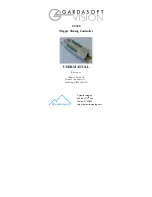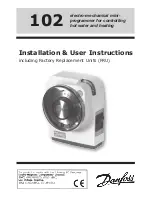
6.2
Output Modes
Each output operates independently. By combining which outputs are triggered by which inputs
and which mode each output is in, it is possible to configure complex sequences of operation.
Several outputs can be triggered by one input to give synchronous operation, or from separate
inputs to give asynchronous operation of different functions.
For each output, the following parameters can be set.
Parameter
Use
Mode
Specifies how the output operates.
Input
Specifies which input is used for triggering. An output signal OP1 to
OP8 can also be used as a trigger. This parameter can be:
0 for the free running timer
1 to 8 for IP1 to IP8
9 to 16 for OP1 to OP8
Gate Input
Specifies an input which enables/disables the output. This is also used to
specify the number of pulses in “burst” mode. This parameter can be:
0 for none
1 to 8 for IP1 to IP8
9 to 16 for OP1 to OP8
<number of pulses> for burst mode
Pulse Delay
Specifies the delay from trigger to pulse output. This can either be a
time period or a number of encoder pulses, depending on the mode.
Pulse Width
Specifies the width of the pulse output. This can either be a time period
or a number of encoder pulses, depending on the mode.
Retrigger time
The retrigger time is the minimum time from when an output is
triggered to the next time. This can be used to debounce noisy inputs or
when a product sensor fires more than once for one product. The
retrigger time uses the same dimension (encoder pulses or time period)
as the Pulse Delay.
Flags
Specifies other options.
When pulsing, the Pulse Delay and Pulse Width parameters can either be fixed times or can be a
number of encoder pulses.
The following operating modes are available for each output. The Mode Number is used for
Ethernet commands. The Mode Name is used when configuring using the keypad.











































